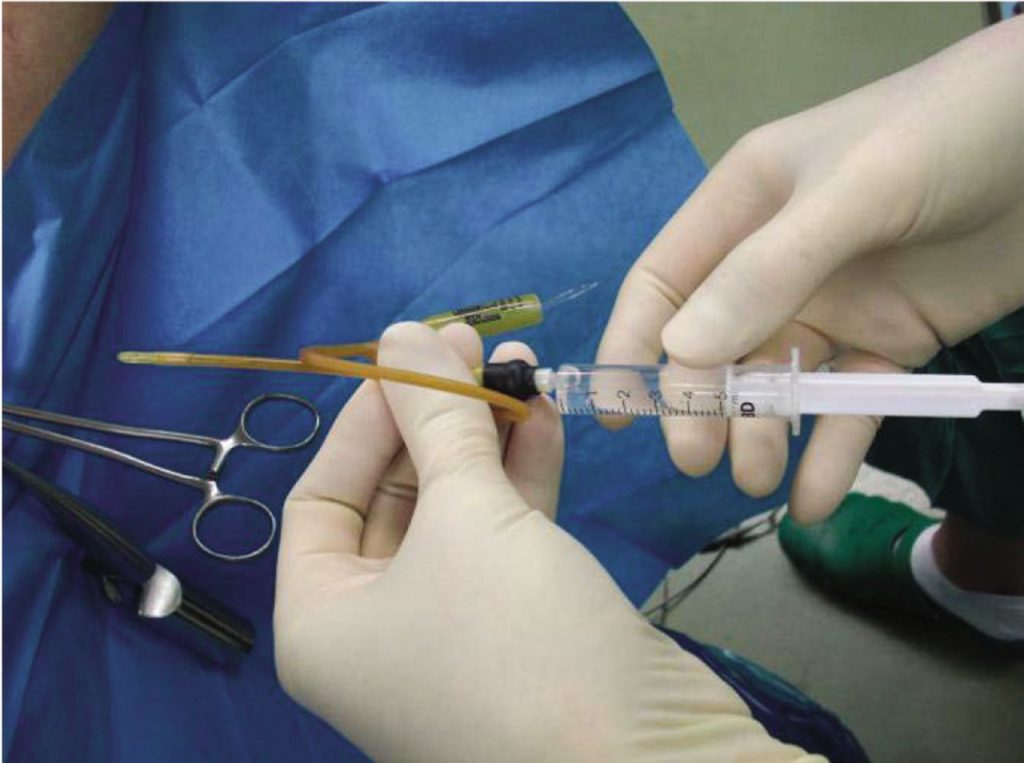Chromotubation, also known as chromopertubation, is a medical procedure used to determine if there are any blockages in the fallopian tubes that may be causing infertility in women. During the procedure, a blue dye solution is injected into the fallopian tubes as part of a minimally invasive surgery called laparoscopy. The dye helps to study the patency of the fallopian tubes, which refers to their state of being open or unobstructed. Chromotubation is one of the standard procedures used to diagnose infertility caused by fallopian tube obstruction.
Purpose of Chromotubation
The purpose of chromotubation is to determine if there are any blockages in the fallopian tubes that may be causing infertility in women. The procedure involves injecting a blue dye solution into the fallopian tubes as part of a minimally invasive surgery called laparoscopy4. The dye helps to study the patency of the fallopian tubes, which refers to their state of being open or unobstructed5. Chromotubation is regarded as a gold standard test to assess the patency of tubes. It is usually carried out when results of another standard procedure called a hysterosalpingogram (HSG) have been inconsistent.
Difference between Chromotubation and Hysterosalpinagogram
Chromotubation and hysterosalpingogram (HSG) are both procedures used to determine if there are any blockages in the fallopian tubes that may be causing infertility in women. Chromotubation involves injecting a blue dye solution into the fallopian tubes as part of a minimally invasive surgery called laparoscopy, while HSG uses a contrast infused into the uterus before an X-Ray is taken to see if the contrast spills out of the tubes or not. Chromotubation is regarded as a gold standard test to assess the patency of tubes, while HSG is a standard procedure used to examine the patency of the fallopian tubes. HSG is a non-invasive procedure, while chromotubation is an invasive procedure that requires anesthesia and involves some risks. Chromotubation is usually carried out when results of HSG have been inconsistent.
Procedure
he procedure involves injecting a blue dye solution into the fallopian tubes as part of a minimally invasive surgery called laparoscopy. A metal or plastic tube is passed through the cervix into the uterus, and the blue dye is injected through this tube into the uterine cavity and fallopian tubes. If the tubes are open, the dye can be observed spilling out of the ends of the tubes. Chromotubation is regarded as a gold standard test to assess the patency of tubes. It is usually carried out when results of another standard procedure called a hysterosalpingogram (HSG) have been inconsistent. HSG uses a contrast infused into the uterus before an X-Ray is taken to see if the contrast spills out of the tubes or not.
Risks Involved
Chromopertubation is an invasive procedure that requires general anesthesia and involves some risks. The risks associated with chromopertubation include pain, nausea, vomiting, sore throat, and muscle aches. There may also be some pain around the small incisions on the abdomen. Chromopertubation may increase the chances of abdominal organ damage during the procedure. Difficulties with the insertion of the laparoscope can rarely happen, especially in those who are overweight or who have had previous abdominal scarring from another procedure. If the instrument cannot be inserted into the abdominal cavity, chromopertubation will not be recommended. Instead, alternative methods of checking the fallopian tubes will be taken into consideration. Blood loss, injury to other organs in the abdomen, nerve damage, and allergic reactions to anesthesia are other risks associated with chromopertubation.
Can You Get Pregnant after Chromotubation?
Chromotubation is regarded as a gold standard test to assess the patency of tubes. Being an invasive procedure, chromotubation is considered as a last resort in the evaluation of female infertility and is usually carried out when results of another standard procedure called a hysterosalpingogram (HSG) have been inconsistent. There is no evidence to suggest that chromotubation affects a woman’s ability to get pregnant.
Resources
https://www.aapc.com/codes/coding-newsletters/my-ob-gyn-coding-alert/beware-of-unbundling-when-reporting-hysteroscopies-article
https://www.ncbi.nlm.nih.gov/pmc/articles/PMC8384029/













